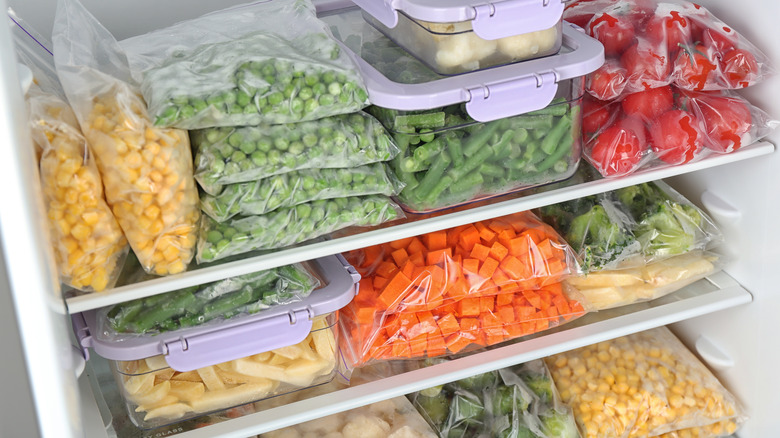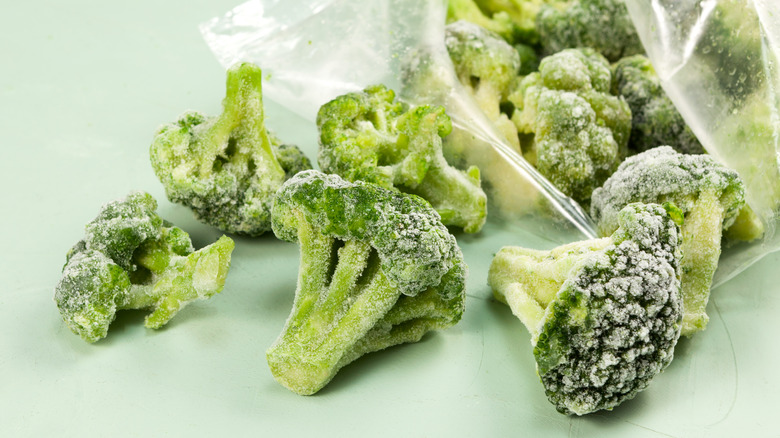The Biggest Reason Your Frozen Vegetables Are Always Soggy
Frozen vegetables can be a lifesaver if you keep them on hand. They can often be steamed in the microwave, roasted in the oven, cooked into a soup, and so much more. But one major issue that many people encounter is ending up with formerly frozen vegetables that turn soggy. With the right know-how, though, you can make better dishes using frozen vegetables and save time, too.
According to HuffPost, vegetables begin to get soggy when they thaw after freezing. This is because of the way water expands inside the vegetables. Ultimately, the expanding water as it freezes breaks down the rigid structures that make vegetables crisp. So when the water decreases during the process of thawing, the vegetable falls in on itself and loses the turgid texture it gained when the water turned to ice.
Fortunately, that doesn't mean all is lost for frozen veggies; you just need to avoid a common mistake, for there is one commonality among those who end up with soft, soggy frozen vegetables.
Forget about thawing frozen vegetables first
One of the biggest mistakes that people make that causes soggy frozen vegetables is giving the vegetables the time to thaw, according to Cooking Light. As frozen vegetables thaw and lose the structure that they had while in the freezer, the texture changes. But actually, there's no need to even go through the thawing or defrosting step because of just how fast vegetables thaw. Unlike raw or uncooked frozen meats, frozen vegetables are so small that they can thaw as they cook and avoid losing their structure.
The only time you might not be able to skip thawing is if you need to remove excess water from the vegetable. Those that have a high water content already — and then have added ice crystals after being frozen — sometimes need to be thawed so you can squeeze or pat the excess water off. No one wants to use frozen vegetables in a dish that will cause the whole thing to turn out wet and loose.

